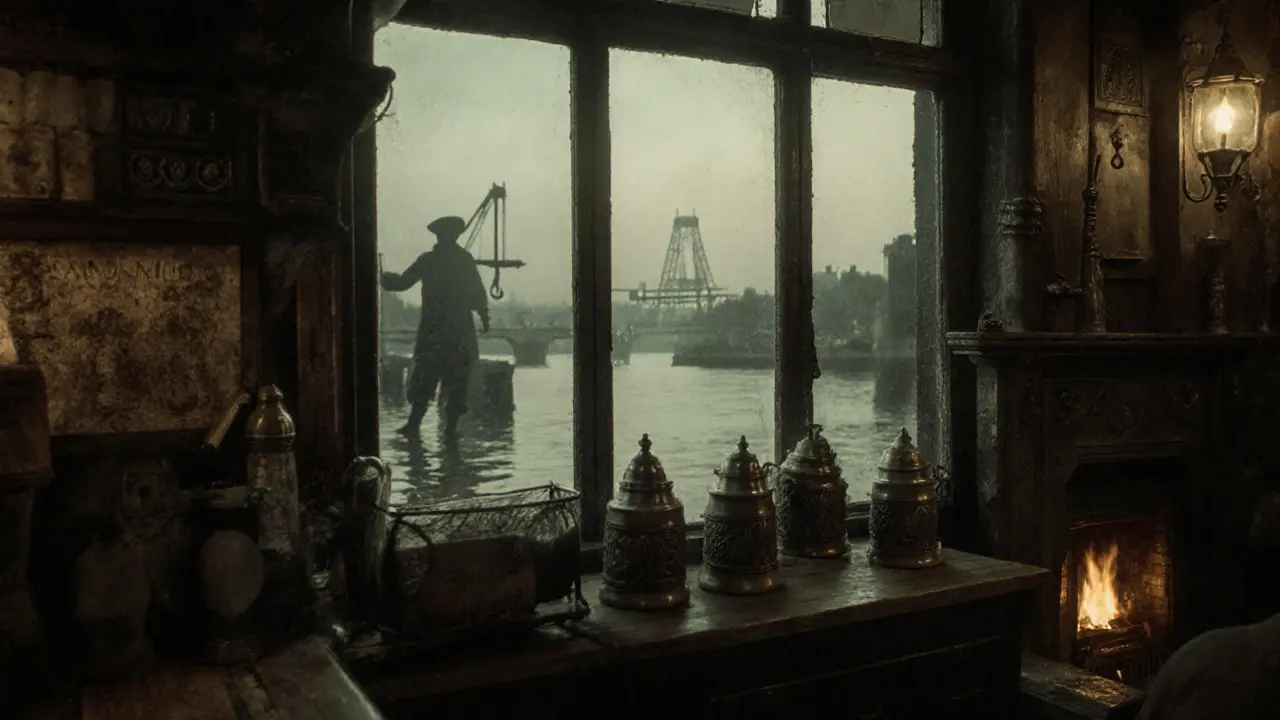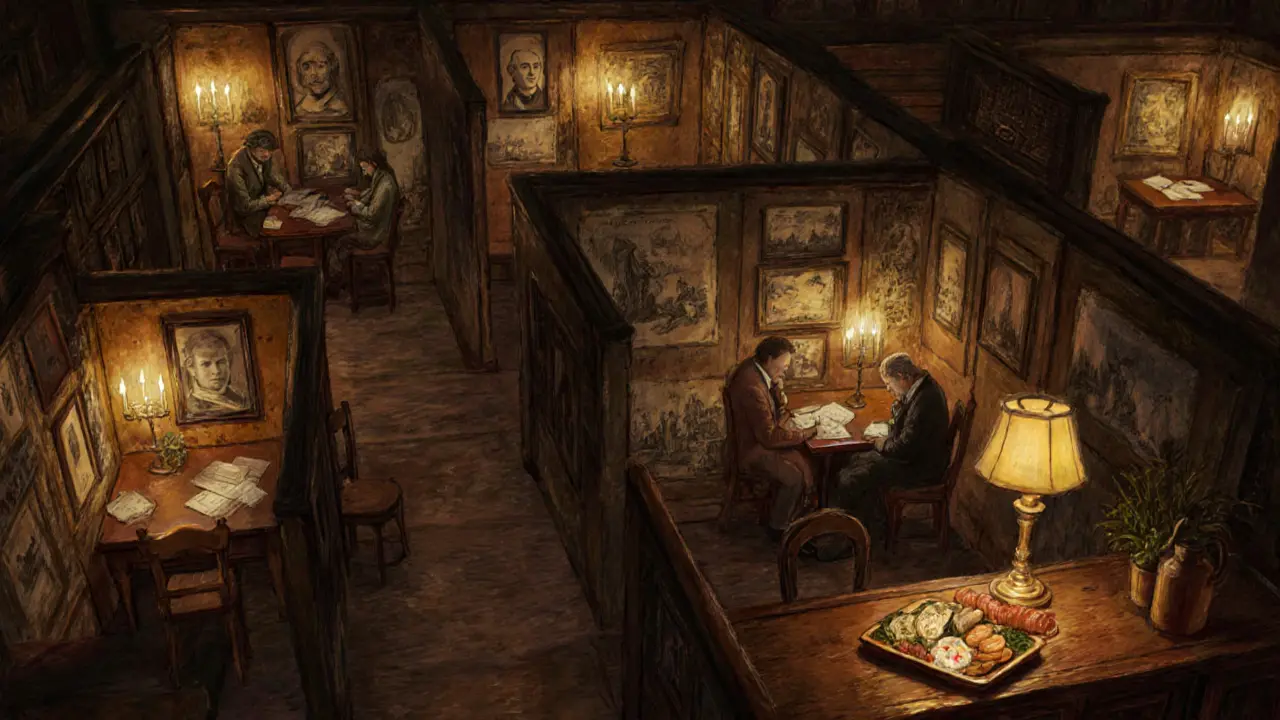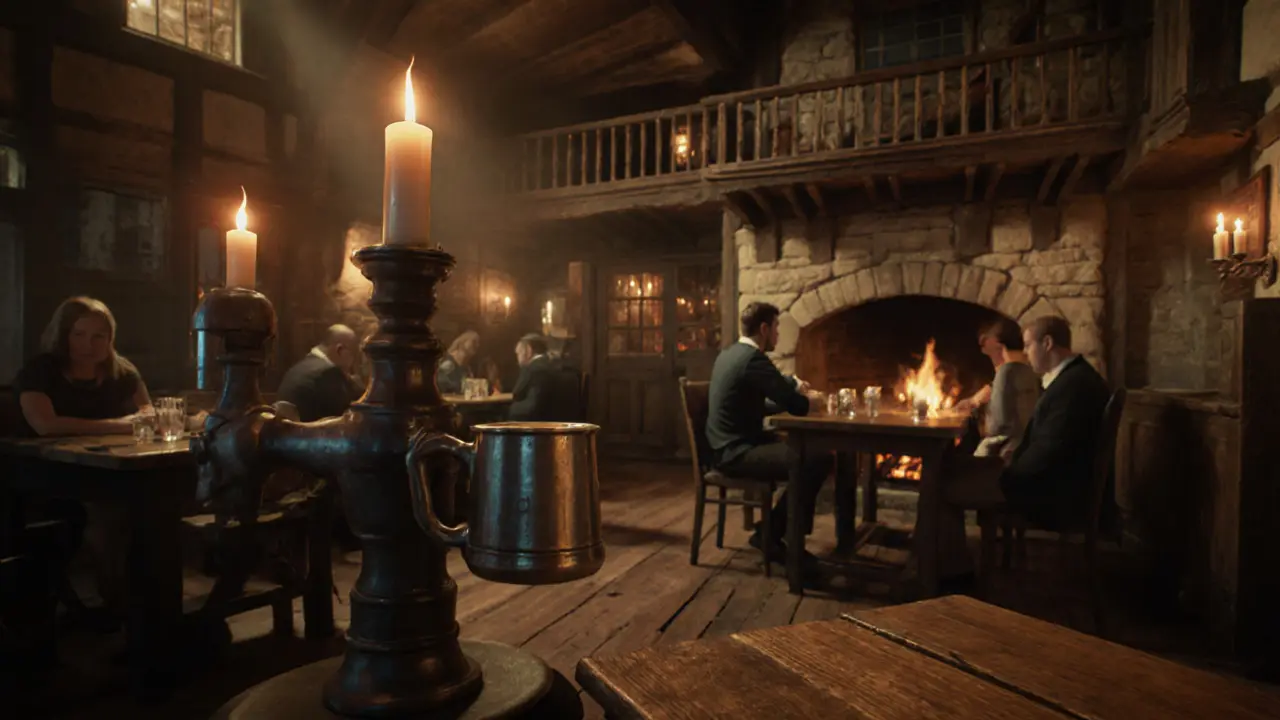London’s nightlife isn’t just about loud clubs and neon lights - it’s also soaked in centuries of stories, secrets, and spilled ale.
If you love history, you don’t have to choose between a good drink and a good story. Some of London’s most unforgettable nights happen in places where the walls still whisper about kings, pirates, poets, and plague survivors. Forget the trendy rooftop bars for a moment. The real magic is in the dim corners of pubs that have been pouring pints since before the American Revolution.
What makes a pub a true history buff’s paradise? It’s not just the age of the building - though many date back to the 1500s. It’s the ghosts in the floorboards, the original fireplaces still crackling, the carved wooden beams that survived the Great Fire of 1666, and the fact that Charles Dickens once scribbled notes here between sips of porter.
The George Inn: London’s Last Remaining Galleried Pub
Located in Southwark, just a stone’s throw from the old Globe Theatre, The George Inn is London’s last surviving galleried coaching inn, built in 1677 on the site of a 13th-century establishment. It was once a hub for travelers arriving by horse-drawn carriage, and later, a meeting spot for Charles Dickens, who used it as inspiration for scenes in Little Dorrit.
Step inside and you’ll see the original timber galleries that once held guests watching horses being unloaded below. The fireplace in the main room is still original, and the beer is poured the same way it was in the 1700s - from a hand pump. On weekends, live folk music fills the space, and the crowd is a mix of locals and tourists who know this isn’t just a pub - it’s a time capsule.
The Prospect of Whitby: Where Pirates Drank and Hangmen Watched
Perched on the banks of the Thames in Wapping, The Prospect of Whitby is London’s oldest riverside pub, dating back to 1520, with a reputation for hosting pirates, smugglers, and executioners.
Its name comes from the old word for "view" - and the view here used to be of the gallows at Execution Dock, where pirates were hanged and left to swing with the tide. Legend says the pub’s cellar was used to store stolen goods. The walls are stained with centuries of smoke, and the floorboards creak under the weight of history.
They still serve traditional ales and fish and chips here. But the real draw? The original wooden bar, the iron fireplace, and the fact that you’re sitting where Daniel Defoe, Samuel Pepys, and even Captain William Kidd once raised a glass. If you want to feel like you’ve stepped into a pirate novel, this is the place.
The Tabard: Chaucer’s Favorite Pub
In the heart of Borough, The Tabard is a 14th-century inn that once hosted Geoffrey Chaucer and served as the starting point for his pilgrims in The Canterbury Tales. The original building burned down in 1676, but the current structure, rebuilt in 1897, sits on the same site and honors the legacy with medieval-inspired decor.
Though it’s now a modern pub with craft beers and seasonal menus, the spirit remains. Look for the painted murals of pilgrims on horseback, the stained-glass windows depicting Chaucer’s characters, and the quiet courtyard where travelers once rested before setting off on long journeys. On Friday nights, they host "Tales of the Tavern" - live readings from Chaucer and other old English poets, paired with mead and mulled wine.

The Blue Posts: A Pub That Saw the Gunpowder Plot
On the corner of St. Martin’s Lane, The Blue Posts is a 17th-century pub that was a known meeting spot for conspirators before the 1605 Gunpowder Plot. Its cellar was allegedly used to store barrels of gunpowder before Guy Fawkes planned to blow up Parliament.
It’s one of the few pubs in London with original 1600s brickwork still visible. The bar is made from reclaimed oak from a shipwrecked vessel, and the ceiling beams are charred from a fire during the English Civil War. The pub’s name comes from the blue post that once stood outside, used to signal the arrival of stagecoaches.
Today, it’s a quiet favorite among historians and academics from nearby King’s College. They serve real ales from small British breweries and keep the fireplace lit year-round. If you ask the bartender for the "Gunpowder Ale," you’ll get a dark, smoky stout brewed in honor of the pub’s most infamous chapter.
Ye Olde Cheshire Cheese: A Literary Sanctuary in the Shadows of the City
Tucked away down a narrow alley off Fleet Street, Ye Olde Cheshire Cheese is a 17th-century pub rebuilt after the Great Fire, known for its labyrinthine rooms, candlelit corners, and literary legacy. Mark Twain, Charles Dickens, Sir Arthur Conan Doyle, and Samuel Johnson all drank here.
The pub has six distinct rooms, each with its own character - from the low-ceilinged Snug to the vaulted cellar where Dickens wrote parts of A Tale of Two Cities. The walls are covered in old engravings, and the bar is made from a single piece of walnut that’s over 300 years old. They still serve traditional British pub fare: steak and kidney pie, ploughman’s lunches, and cask ales poured from hand pumps.
It’s not loud. It’s not flashy. But if you sit in the back room with a pint of London Pride and listen to the murmur of voices around you, you’ll feel like you’re sharing a table with ghosts.
How to Spot a True Historic Pub
Not every old building is a historic pub. Here’s how to tell the real ones from the rebranded ones:
- Original features: Look for exposed timber beams, fireplaces with original mantels, and wooden bars that look worn from centuries of elbows.
- Hand pumps: Real ales poured from hand pumps are a sign of authenticity. Most modern pubs use keg systems - historic ones still use cask-conditioned beer.
- Signage: Look for old painted signs, often with blackletter fonts. Many were carved by hand before the 1900s.
- Location: Historic pubs cluster near old trade routes, riverbanks, or former market squares. Avoid places on main shopping streets - they’re usually modern recreations.
- Atmosphere: If it feels like a museum, it’s probably not alive. If it feels like a living room that’s been used for 400 years, you’re in the right place.

When to Go - and When to Skip
These pubs aren’t tourist traps - they’re still working parts of London’s social fabric. But timing matters.
- Best time: Weekday evenings after 7 p.m., especially Tuesday to Thursday. You’ll get the quietest, most authentic vibe.
- Avoid: Friday and Saturday nights. These places get packed with groups on pub crawls who don’t care about the history - just the next round.
- Pro tip: Arrive before 8 p.m. and ask the bartender for the "house story." Most know at least one legend tied to their walls.
What to Order
Stick to the classics - they’re not just tradition, they’re taste-tested by centuries of drinkers.
- London Pride: A smooth, malty ale brewed by Fuller’s since 1959. Perfect for sipping slowly.
- Stout: Especially the dark, roasty ones like Guinness or Young’s Double Stout. Ideal for cold nights in old stone rooms.
- Meat pies: Steak and kidney, pork and apple, or venison - all made with local ingredients.
- Ploughman’s lunch: Cold cuts, cheddar, pickles, and crusty bread. A meal that hasn’t changed since the 1800s.
Don’t order cocktails. These pubs aren’t mixology bars. They’re places where flavor comes from time, not garnishes.
Why This Matters
London’s historic pubs aren’t just relics - they’re living archives. They’ve survived wars, plagues, fires, and gentrification. Every scratch on the bar, every crack in the tile, every echo in the cellar tells a story that textbooks can’t capture.
When you sit in one of these places, you’re not just drinking. You’re participating in a centuries-old ritual. You’re joining a chain of people who came here to talk, to mourn, to celebrate, to plot, and to simply be. That’s the real nightlife - not the flashing lights, but the quiet hum of history still breathing.
Are these historic pubs expensive?
Not necessarily. While some have raised prices to match their heritage, most still charge under £7 for a pint and under £15 for a meal. The George Inn and Ye Olde Cheshire Cheese are among the most reasonably priced for their historical value. You’re paying for atmosphere, not luxury.
Can I take photos inside?
Yes - but be respectful. Avoid flash photography, especially in crowded spots. Many of these pubs have regulars who come for the quiet. If you’re unsure, ask the bartender. Most are happy to point out interesting details if you show genuine interest.
Are these pubs accessible?
Accessibility varies. Many historic pubs have narrow staircases, low doorways, or uneven floors from centuries of use. The George Inn has a lift to upper levels, but Ye Olde Cheshire Cheese does not. Call ahead if mobility is a concern - staff are usually happy to help.
Do these pubs have Wi-Fi?
Some do, but many don’t - and that’s part of the charm. If you’re looking to disconnect and just listen to the stories, that’s a feature, not a flaw. The ones that do offer Wi-Fi often have it in the back room only.
What’s the best way to visit multiple historic pubs in one night?
Walk between them. The best route is Southwark (The George) → Wapping (Prospect of Whitby) → Borough (The Tabard) → Fleet Street (Cheshire Cheese). It’s a 2.5-mile loop, mostly along the Thames or quiet side streets. Take your time. The journey is part of the history.
Next Steps
If you loved this night out, try exploring London’s hidden alleyways with a historical walking tour - many are led by retired archivists or local historians. Or pick up a copy of The London Pub Guide by David W. Dunlap, which maps over 200 historic pubs with their stories.
Or better yet - next time you’re in London, skip the big-name clubs. Find a dimly lit pub with a wooden bar, order a pint, and ask the person next to you: "What’s the weirdest thing you’ve heard happen here?" Chances are, they’ll have a story older than you are.
